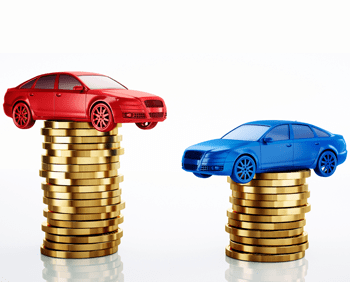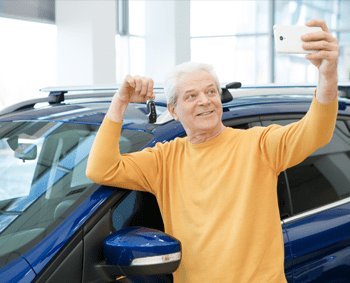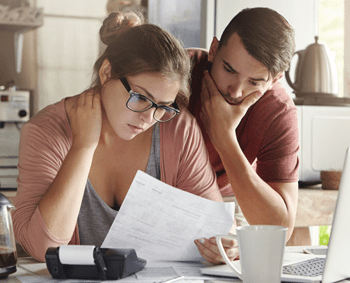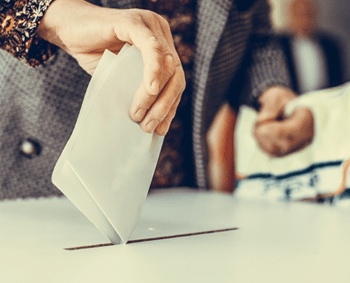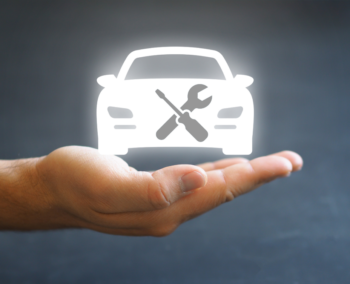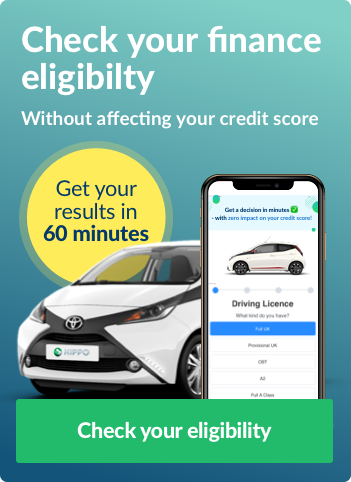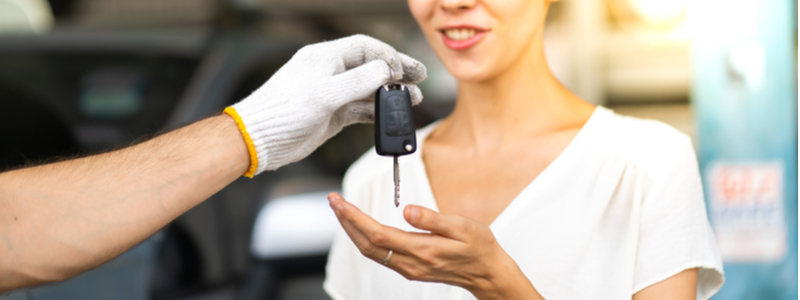
Part exchanging your car can save you the time and hassle of selling it privately, as well as reducing the cost of your new car. But how does it all work, and is it worth it?
What is car part exchange and how does it work?
Part exchanging your car is essentially trading it in to buy a newer, usually more expensive car. The value of your old car is taken off the price of the new one – like a discount.
When you part exchange your car, you’ll decide on the new car you want and then agree on the price of your old car with the dealer.
The money you get off the new car will, of course, depend on the car you’re trading in, as well as any outstanding finance on your current vehicle.
You probably won’t get as much for the car as if you sold it privately, as you won’t set the price yourself.
However, if you’re prepared, you can negotiate with the dealer over the price to get the best one you can.
It’s one of many ways to sell your car, but undoubtedly a more hassle-free and less time-consuming route than selling it privately.
Can you part exchange a car on finance?
Typically, when you have a car on finance, it’s harder or even illegal to sell as you don’t own the car until all the payments have been made. However, with part exchange, it becomes a possibility.
Firstly, you need to find out your settlement figure from the car finance company. As long as that figure is less than your car’s valuation price, you can use the amount to put towards the deposit on your new car.
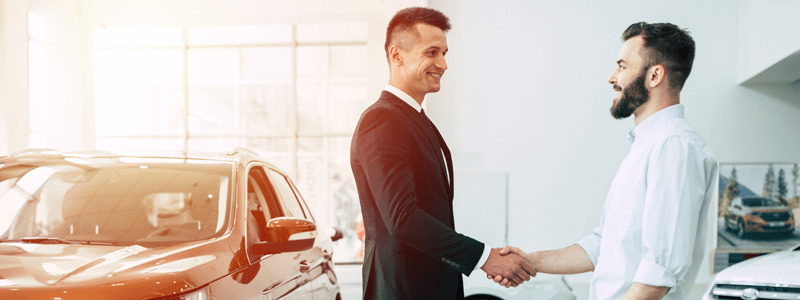
If the settlement figure is less than your car’s valuation price, this is known as negative equity. You could still part exchange, but you would have to pay that amount of money on top of the price for the new car.
So, depending on when you need the new car, it may be better to wait it out until your finance deal is further along.
Can you part exchange a car on hire purchase?
With a hire purchase agreement, you pay a deposit followed by two to five years of fixed monthly instalments.
At the end of the term, once all the repayments have been made, you become the legal owner of the car.
Depending on how long your agreement is, you may want to change your car before the agreement is up.
If you’re looking to part exchange, you’ll need to get a settlement figure. You can get one by contacting your finance provider, although most dealerships can provide it for you if you’re struggling.
That figure will cover the cost of any unpaid instalments, interest and fees remaining. Once you know your car’s valuation price, you can do the sums to see if it’s worth it.
For example:
Your current car has a part exchange value of £5,000 and the car you want to purchase is £12,000.
Your settlement figure is £2,000 – meaning you still owe £2,000 in finance.
When you trade your car in, the dealer will pay the £2,000 balance to the finance company – clearing that debt – and give you £3,000 towards your new car.
So, your new car’s finance is £9,000 (£12,000 minus £3,000).
If, however, your settlement figure was £6,000, the dealer would pay off the £5,000, and you’d either have to put £1,000 down as a deposit to clear the existing finance or add the extra £1,000 to the price of your new car.
Therefore, you’d be financing £13,000, which means your monthly payments would be higher.
Can you part exchange a car on PCP?
PCP deals are a little more flexible than HP, so part exchanging to a newer model or different brand can be easy.
The simplest way to part exchange is at the end of your agreement – you can hand the car back and take out a new contract on your next car.
However, if you want to part-exchange early, that’s possible too.
Like HP, part exchanging your car while it’s on PCP will involve a settlement fee. This will include the car’s value that’s still outstanding, including the final balloon payment needed to purchase the car and interest.
If the value of your current car is more than the settlement fee, you can settle your finance, and anything remaining can go towards the new car.
If the value of your current car is worth less than the settlement fee, you’ll need to make up the difference or add it to your new finance agreement.
The closer you are to the end of your agreement, the less your settlement fee will be. In fact, there could be a point when your car’s value matches the remaining debt, meaning it wouldn’t cost you anything, and you could take out your next PCP deal on the new car.
How does part exchange work?
There are four steps to part exchanging your car:
1. Valuation
It’s a good idea to do a little research first to see what your old car could be worth, so you’re in a better position to negotiate the best price.
Then, speak to the dealership about taking it in for a valuation. To get the best price, make sure the car is in the best condition possible – including cleaned inside and out.
How much is my car worth part exchange? Get a valuation here
2. Settling finance
If you have any outstanding finance on the car, now’s the time to find out your settlement figure and see if it’s worth part exchanging now or whether it’ll be more cost-effective to wait a little longer.
3. Choosing your new car
Once you know the value of your current car and any remaining finance you need to settle, you’ll have an idea of how much you can afford for your new one.
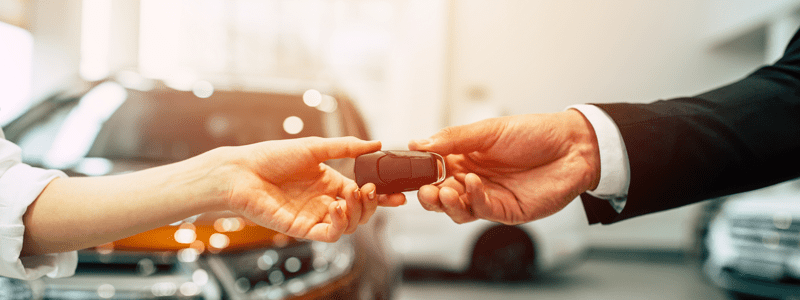
So, the more interesting part of part exchange can now start – picking your new car.
4. Part exchanging
Once everything’s in place, you can bring in your old car and pick up your new one. Don’t forget you’ll need all the documents (and all keys!) for your old car. Here’s a list of everything that your dealer will ask for:
- The car’s logbook (V5)
- MOT certificate
- The car’s manual
- Service book plus any documentation regarding repairs
- Vehicle key (including any spares)
If you’re arranging finance on the new car, you’ll also need some further documentation, such as your passport, bank statements or utility bills.
The dealership will take care of all the paperwork for you, making it hassle free to get back on the road.
When’s the best time to part exchange?
The idea of changing your car for something shiny that you can drive straight off the forecourt is certainly enticing.
However, depending on how much you get for your car and the cost of the new one, it doesn’t always make financial sense. There’s also a lot riding on when you part exchange.
If your car is on finance, usually it’s better to part exchange towards the end of the agreement when there’s less to pay off on your current car, giving you more towards your new one.
Remember, when you part exchange your car, it’s not only the price of your current car you’re negotiating on – it’s also the price for the new one.
If you’re looking for a certain model, find out when the new one is out, as often you can get good deals on the previous one.
But it’s worth factoring in that this will then be an older model, and even though it’s a similar age, it will depreciate faster.
Finally, on top of all of this, age and mileage play an important factor, too. Cars do most of their depreciating in the first few years.
So, if you’re looking to trade up, it’s best to sell it earlier when it’s worth more. If your car has any added extras or low mileage, it can also make it more attractive and raise the price.
But remember, the earlier you decide to part exchange it, the more finance there is to cover. So, make sure you weigh up one against the other.
What happens to your car once you’ve part exchanged it?
Every dealership is different, but usually one of two things will happen once you’ve part exchanged your car.
Your old car will either be prepared and put up for sale as a used car. Or it will be sold through a car auction.
Can you part exchange your car for a cheaper one?
There could be many reasons for wanting to ‘downgrade’ your car, from affordability to wanting something smaller.
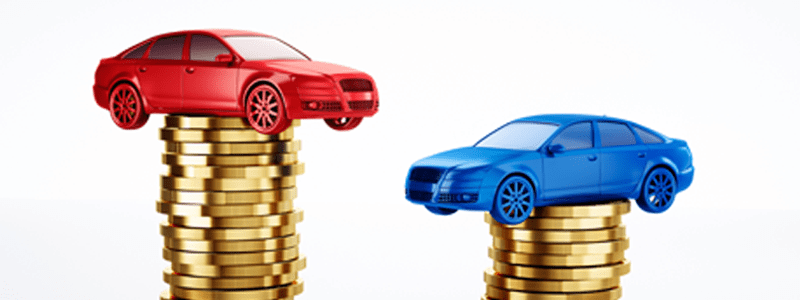
Just like upgrading your vehicle through part exchange, it’s possible to part exchange your car for a cheaper one.
And if your current vehicle is valued at more than the car you wish to buy, you could use it as full payment for the new one.
Do I have to part exchange my car at the same place I bought it?
Usually, you can part exchange your car at any dealership. It doesn’t have to be the same chain or even the same car brand as where you got it from.
You’re in control of the decision. So, if you currently have a Ford Focus, nothing stops you from trading it in for a VW Golf or Mercedes-Benz A-Class at a different dealership.
Is part exchange worth it?
It all depends on what’s the most important thing to you when selling a car. Part exchange is definitely a simpler, less time-consuming way to sell your car.
All you need to do is bring the car to the dealership, pick a new car, sign some paperwork and swap keys for your new car.
There’s none of the hassle of advertising your car, arranging viewings or dealing with paperwork.
So, if you have your eye on a new car with a dealership and want a quick sale with minimal hassle, part exchange is definitely the way to go.
Read: Is it better to part exchange a car or privately sell?
Find out how much your car is worth by sending us an enquiry. Just click the button below.

